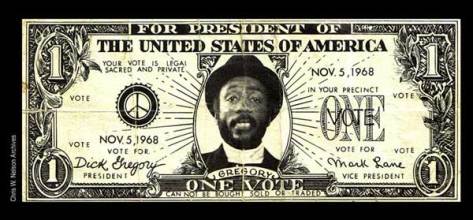By Dennis Hartley
(Originally posted on Digby’s Hullabaloo on Jun 11, 2025)

The music world has lost a giant today. Since the news broke, it seems all the superlatives have been used up describing Brian Wilson’s genius, so I thought I’d let the music do the talking. And rather than slapping together a playlist of The Beach Boys greatest hits (too easy), it feels more appropriate to celebrate Wilson’s legacy via artists who have taken inspiration from him. In tribute, here are 15 covers and originals that channel his spirit.
The Beatles – “Back in the U.S.S.R.” – Granted, this may be cheating a bit, considering that (as the story goes) Beach Boy Mike Love overheard Paul McCartney working on this tune when they were both studying under the Maharishi Mahesh Yogi in India and suggested that “[what Paul] ought to do is talk about the girls all around Russia, the Ukraine, and Georgia.” And so it came to pass. Then again, The Beatles didn’t give a tip o’ the hat to just anybody, you know.
First Class – “Beach Baby” – UK studio band First Class was the brainchild of singer-songwriter Tony Burrows, who also sang lead on other one-hit wonders, including “Love Grows Where My Rosemary Goes” (The Edison Lighthouse), “My Baby Loves Lovin’” (White Plains), and “United We Stand” (The Brotherhood of Man). This pop confection was a Top 10 song in the U.S. in 1974.
Matthew Sweet and Susanna Hoffs – “The Warmth of the Sun” – A lovely cover from Sweet and Hoffs’ Under the Covers, Vol. 1 collaboration album. The original version (featuring one of Brian Wilson’s most gorgeous melodies) was on the 1964 album Shut Down Vol 2. Atypically introspective and melancholy for this era of the band, it had an unusual origin story. Wilson and Mike Love began work on the tune in the wee hours of the morning JFK was assassinated; news of the event changed the tenor of the lyrics and vocal performances.
Todd Rundgren – “Good Vibrations” – A near carbon copy of the Beach Boys’ brilliant 1966 hit, which famously took Wilson 7 months to produce (in four studios). This cut is from Rundgren’s 1976 album Faithful, which features one side of originals and the other devoted to “faithful” covers of 60s tunes.
10cc – “The Dean and I” – Imbued with shades of “Wouldn’t It Be Nice” (particularly on the bridge) and typically cheeky lyrics, this cut is from 10cc’s eponymous 1973 debut album.
Roy Wood – “Why Does Such a Pretty Girl Sing Those Sad Songs” – This uncanny homage is taken from the former Move front man’s 2nd solo album Mustard, released in 1975. I wager this one could pass as an original Brian Wilson composition in a blindfold test!
The High Llamas – “Over the River” – Band founder/keyboardist Sean O’Hagan has never made a secret of his admiration for Brian Wilson, hence I could have picked any number of his compositions to include. This instrumental, featured on the band’s 1998 Cold and Bouncy album, rings of Wilson’s Smile era.
Me First and the Gimme Gimmes – “Sloop John B.” – This fun punk-pop cover of a Pet Sounds cut cleverly tips its hat to the Beach Boys and The Ramones!
The Raspberries – “Cruisin’ Music” – The Raspberries go beach cruisin’ a la Wilson, from their 1974 album Starting Over.
Ken Sharp – “Girl Don’t Tell Me” – Ken Sharp is a sort of power pop Renaissance man; in addition to releasing a number of singles and albums, he has authored/co-authored 18 music books-including tomes on Cheap Trick, The Raspberries, The Small Faces, and Rick Springfield. This song was the B-side of the Beach Boys’ 1965 hit “Barbara Ann”; Sharp’s cover incorporates Beatle influences.
Martin Newell – “Miss Van Houten’s Coffee Shoppe” – Despite the fact that he writes hook-laden pop gems in his sleep, and has been doing so for five decades, endearingly eccentric singer-musician-songwriter-poet Martin Newell (Cleaners From Venus, Brotherhood of Lizards) remains a selfishly-guarded secret by cultish admirers (of which I am one). This bouncy number suggests some heavy Brian Wilson influence.
Los Lobos – “Sail on Sailor” – This fabulous cover is from Los Lobos’ 2021 album Native Sons, which paid tribute to L.A.-based artists.
The Dukes of Stratosphear – “Pale and Precious” – It’s hard to miss the Brian Wilson influence in this cut, taken from the band’s 2nd album Psonic Psunspot (this “band” was actually a nom de plume for an XTC side project).
Flo & Eddie – “Keep it Warm” – Here’s another one that could pass for a Wilson original (well…satirical lyrics aside), by ex-Turtles/Mothers of Invention members Howard Kaylan and Mark Volman, from their 1975 album Illegal, Immoral, and Fattening.
David Lee Roth – “California Girls” – No one could ever accuse the former Van Halen front man of being camera-shy. This remains one of the most memorable 80s videos, and also holds up as a great arrangement of one of Brian Wilson’s signature compositions.
Previous posts with related themes:










































